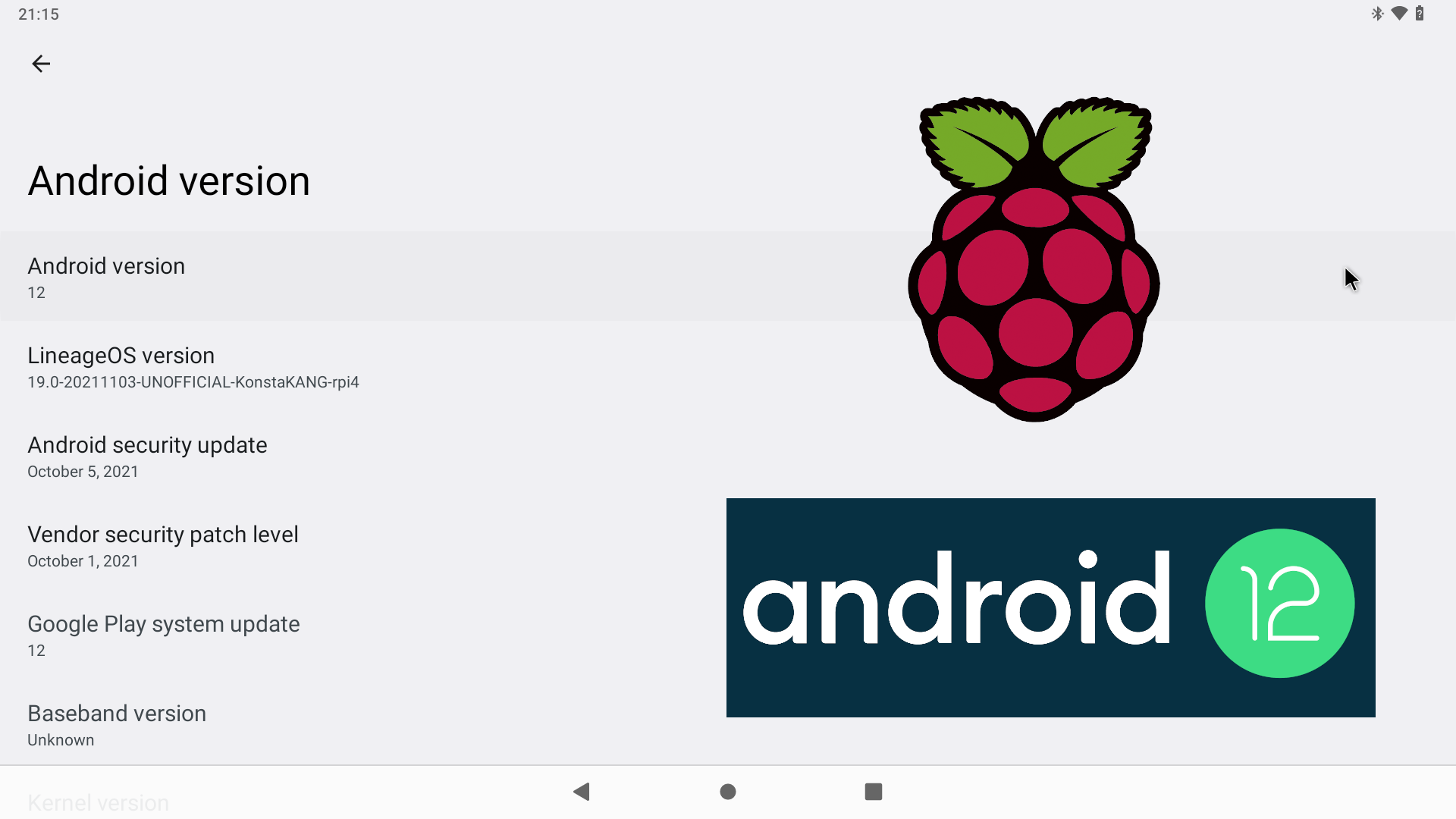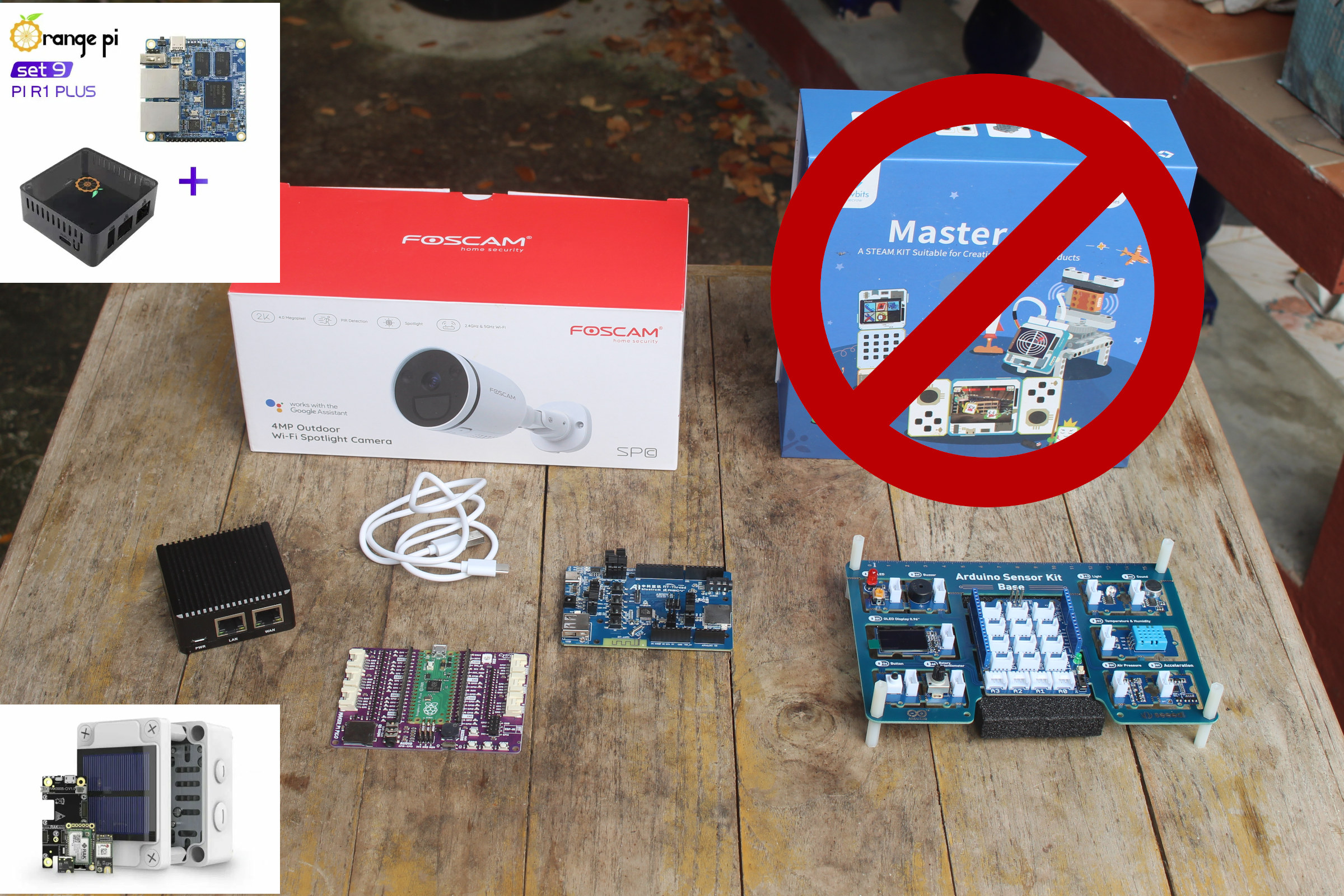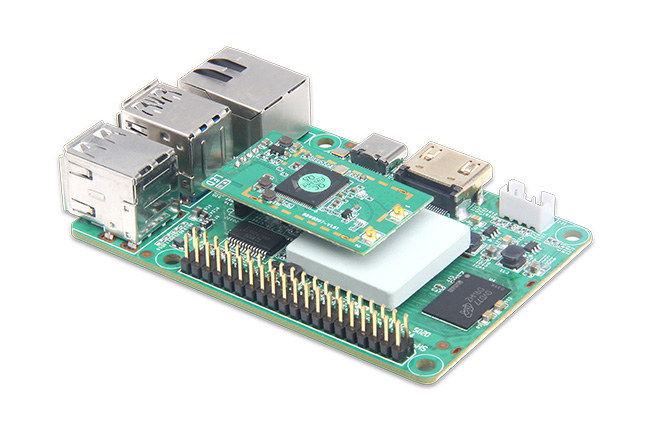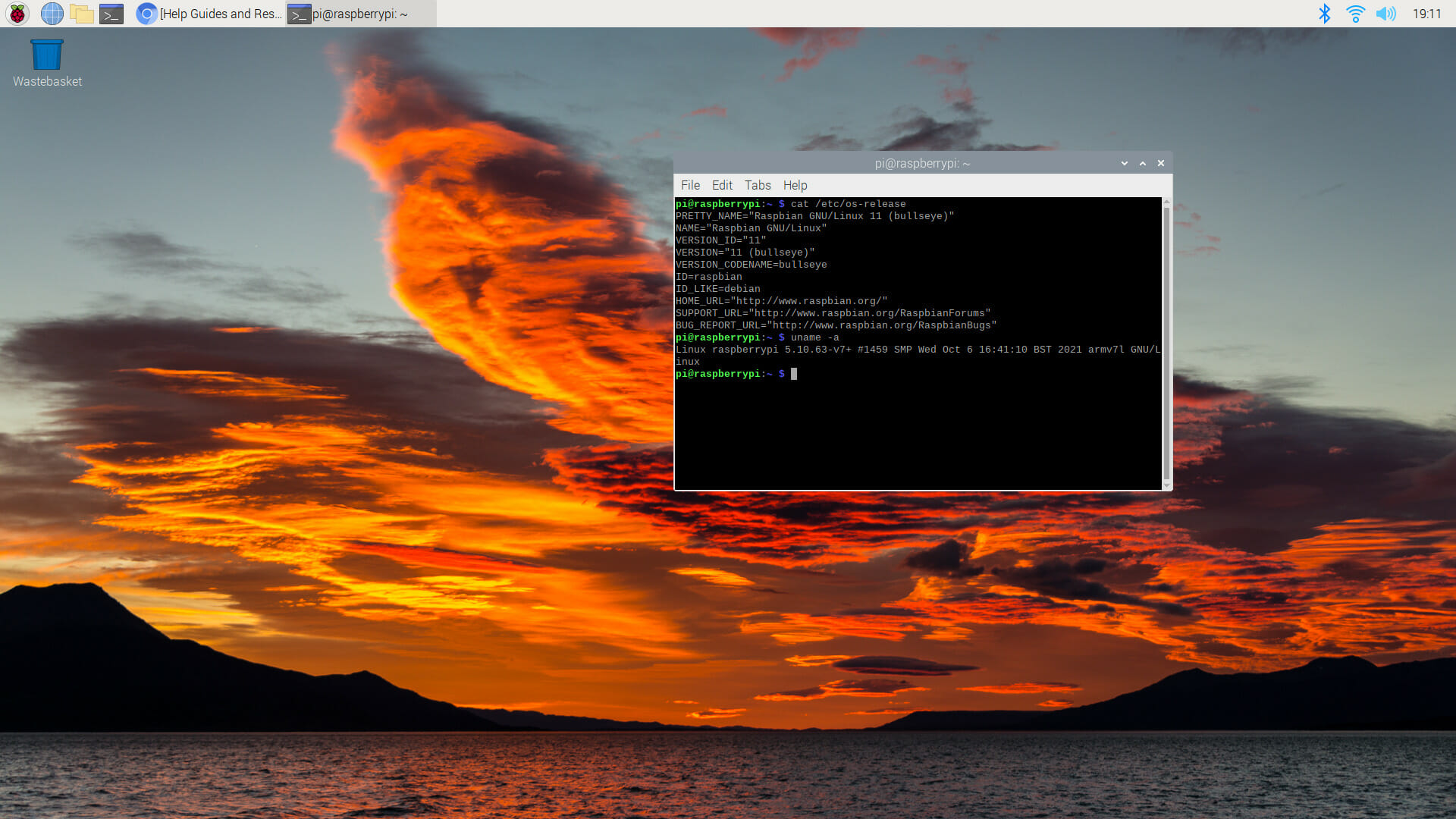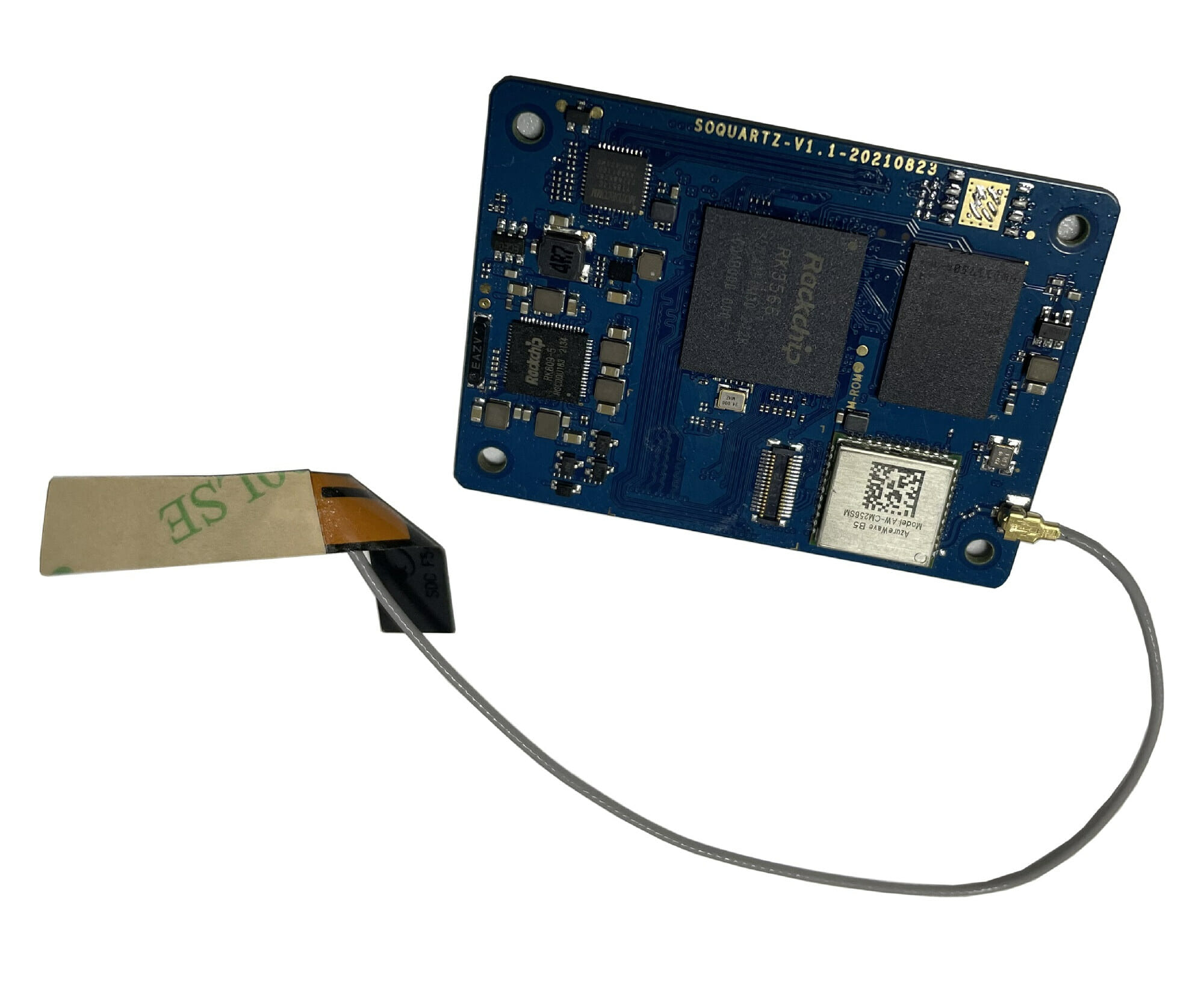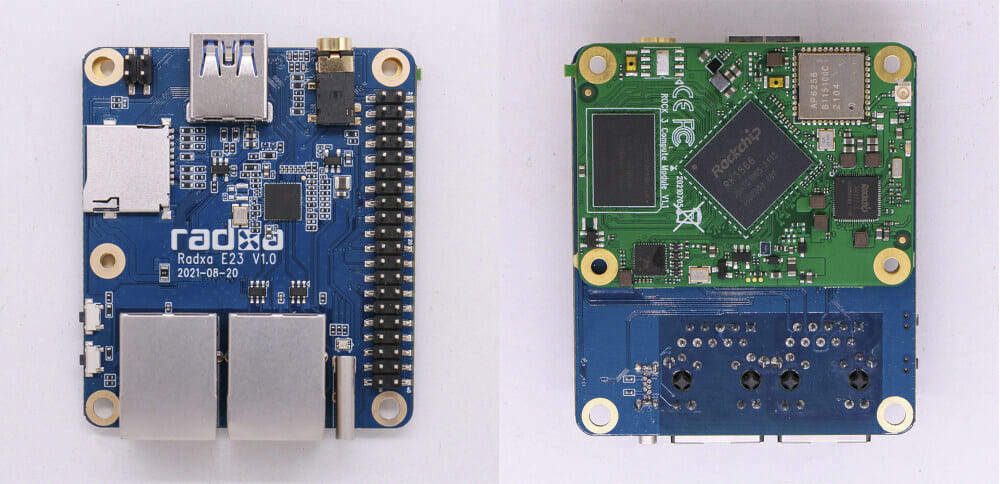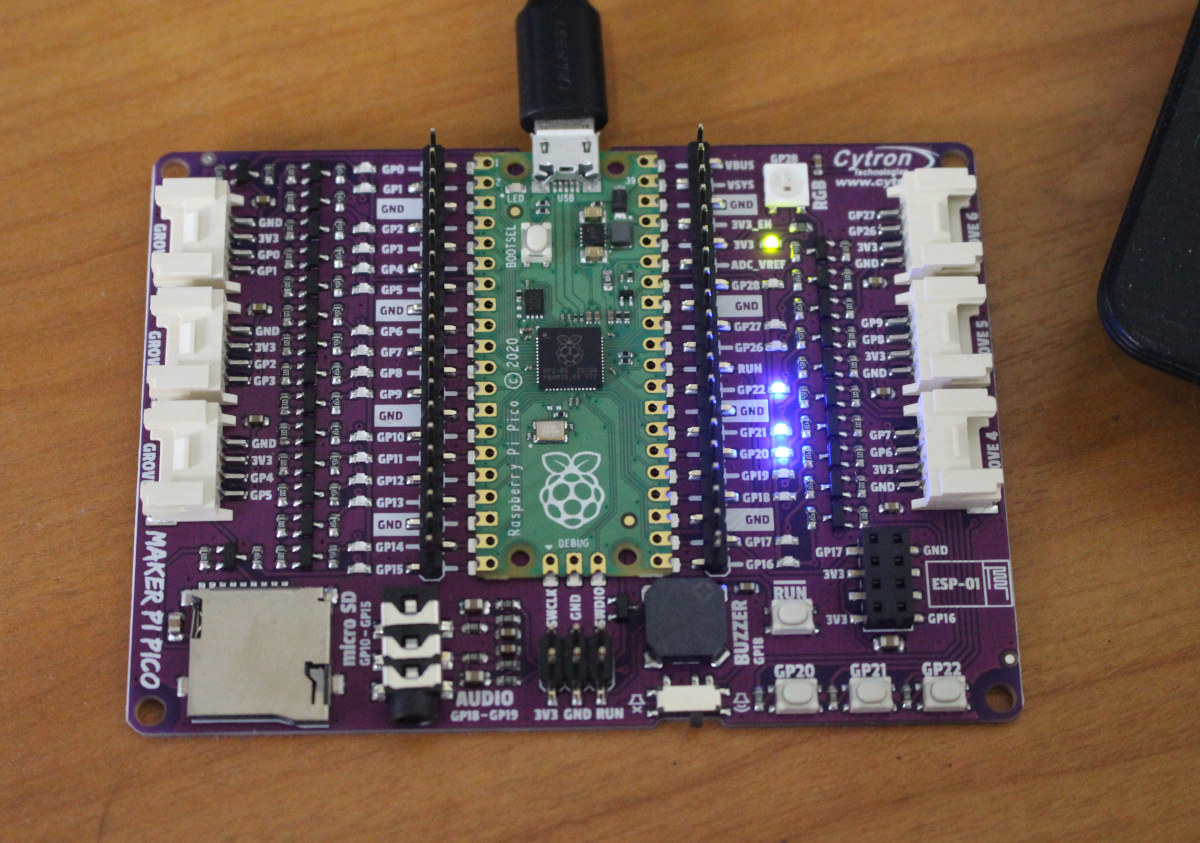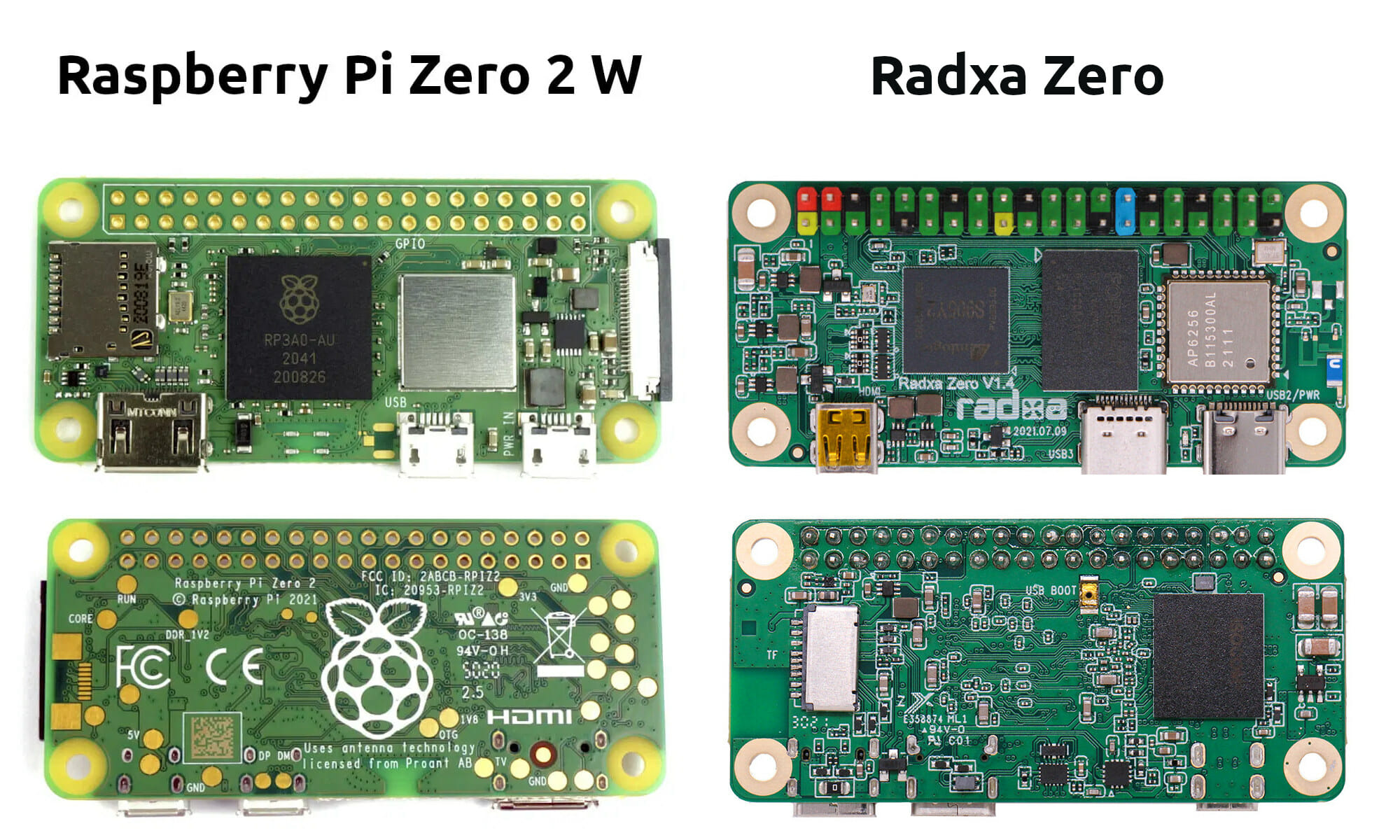Android 12 (AOSP) source code was released last month, and a developer took the opportunity to port Android 12 to the Raspberry Pi 4 single board computer and derivatives. More specifically, KonstaT created an unofficial build of LineageOS 19.0 for Raspberry Pi 4, Raspberry Pi 400 keyboard PC, and Compute Module 4 working on systems with at least 2GB of RAM. While it’s reserved for advanced users, the Android 12 build appears to work pretty well with most features supported including: Video HDMI display including CEC Touchscreen/multi-touch (USB touchscreens, Waveshare SPI touchscreens) Hardware-accelerated graphics (V3D, OpenGL & Vulkan) Audio HDMI, 3.5mm jack, USB microphones, Bluetooth speakers/headphones Audio DACs such as Hifiberry DAC+ Connectivity Ethernet WiFi including tethering Bluetooth including Bluetooth tethering GPS using external USB modules USB tested with USB mouse, keyboard, storage, etc… USB-C: ADB, MTP, PTP, USB tethering I/Os (GPIO, I2C, SPI) tested with Remote controls via external […]
Giveaway Week 2021 winners announced!
Giveaway Week 2021 is now over, and I’m ready to announce the winners. This year, CNX Software was joined by Rakwireless and Shenzhen Xunlong Software, as I did not have enough hardware to send out. I also had planned to give away Crowbits Master Kit, but when I realized the ESP32 module had a battery, I would have had to ask $100 just for shipping, plus having the risk of messing things up, since I’ve never sent devices with batteries with the new regulations. Nevertheless, the void was filled thanks to the generosity of Rakwireless who offered a solar-powered LoRa GPS tracker, and Shenzhen Xunlong Software who proposed an Orange Pi R1 SBC with a plastic enclosure. Let’s go through the list of winners located in four continents with Europe, North America, Asia, and Oceania represented: NanoPi R2S gateway – Jason, CANADA WisBlock Kit 2 LoRa-based GPS Tracker with Solar […]
XPI-S905X3/S905X2 4K SBC with 2GB RAM sold for $35 and up
Geniatech has added two more single board computers to its XPI family with Raspberry Pi form factor. The Geniatech XPI-S905X2 and XPI-S905X3 boards are powered by respectively Amlogic S905X2 and S905X3/S905X4 quad-core processors, ship with 2GB RAM, and sell for $35 and up depending on the choice of processor and the presence of a wireless module. The company promotes each Raspberry Pi 3 lookalike as a “4K Single Board ARM PC” because of the 4K video playback capabilities or the Amlogic processors. Those boards provide an update to the earlier Amlogic S905X based XPI-S905X, and join Rockchip and NXP models. Geniatech XPI-S905X3/S905X2: SoC (one or the other) Amlogic S905X2 quad-core Cortex-A53 processor with Mali-G31 MP2 GPU Amlogic S905X3/S905X4 quad-core Cortex-A55 processor with Mali-G31 MP2 GPU System Memory – 2GB 1GB Optional) Storage – 8GB eMMC flash (option for 16GB or 32GB), MicroSD card slot Video & audio output – HDMI […]
Raspberry Pi OS upgraded to Debian 11 “Bullseye”
Debian 11 “Bullseye” was released in August 2021, and I was expecting Raspberry Pi OS to soon get upgraded to the latest version, especially the last time around, in 2019, Raspian Buster was released even before the official Debian 10 “Buster” release, although the reason was Raspberry Pi 4 launch. This time around it took longer, but the good news is that Raspberry Pi OS has just been upgraded to Debian 11, meaning it benefits from the new features such as driverless printing, in-kernel exFAT module, “yescrypt” password hashing, and packages upgraded to more recent versions. The Raspberry Pi Foundation goes into more details about what changed in the new Raspberry Pi OS release with GTK+3 user interface toolkit, Mutter window manager replacing OpenBox in boards with 2GB RAM or more, new KMS video and camera drivers, and more. Raspberry Pi OS “BullsEye” can be downloaded from the usual place, […]
SOQuartz – Raspberry Pi CM4 compatible Rockchip RK3566 SoM launched for $35 and up
Radxa CM3 Raspberry Pi 4 alternative was just introduced yesterday, but today, Pine64 SOQuartz Compute Module has just become available for $34.99 and up. Pine64 announced the Raspberry Pi Compute Module 4 compatible Rockchip RK3566 system-on-module (SoM) last June, and today the company/community launched three SOQuartz models with a wireless module and equipped with either 2GB, 4GB, or 8GB RAM. SOQuartz system-on-module preliminary specifications: SoC – Rockchip RK3566 quad-core Cortex-A55 processor up to 1.8 GHz with 32-bit RISC-V MCU, Arm Mali-G52 GPU supporting OpenGL ES 1.1/2.0/3.2, OpenCL 2.0, Vulkan 1.1, 0.8 TOPS NPU for AI acceleration System Memory – 2GB to 8GB LPDDR4 Storage Optional 128 Mbit SPI flash Optional eMMC module from 16GB up to 128GB capacity or soldered-on eMMC module (see bottom of board) Wireless module – Azurewave AW-CM256SM WiFi 5 802.11ac & Bluetooth 5.0 wireless module plus an u.FL antenna connector. 2x 100-pin high-density board-to-board connectors with: […]
Radxa CM3 – A drop-in Raspberry Pi CM4 alternative
Radxa CM3 is a system-on-module that offers an alternative to the Raspberry Pi CM4, with the same form factor allowing it to become a drop-in replacement, but switching from a Broadcom BCM2711 processor to a Rockchip RK3566 quad-core Cortex-A55 SoC. Radxa CM3 will work with existing carrier boards for the Raspberry Pi Compute Module 4, albeit some features such as dual HDMI are not available, instead, providing a single HDMI, but the module also offers extra features through an additional 100-pin board-to-board with interfaces such as SATA III and USB 3.0. Let’s compare Radxa CM3 specifications to the ones of Raspberry Pi CM4. Comparing Broadcom BCM2711 quad-core processor and Rockchip RK3566, as the Cortex-A72 may still be faster on some workloads despite the lower frequency, and some other workloads may be dramatically faster on RK3566, for example for those using Armv8 Crypto extensions missing on all Raspberry Pi, which we […]
Giveaway Week – Maker Pi Pico board
If you have not played with Raspberry Pi Pico board, here’s an opportunity, as the third prize of our giveaway week is the Maker Pi Pico board fitted with the Raspberry Pi RP2040 MCU board, and providing easy access to I/Os with headers and Grove connector, plus a buzzer, an audio jack, and a MicroSD card socket for people needing storage. I reviewed the Maker Pi Pico board with CircuitPython, and it was more convenient than the bare Raspberry Pi Pico thanks to the reset button and an LED is assigned for each I/O. You could also add an ESP-01 module for WiFi connectivity since there’s an 8-pin header for that purpose. The CNXSoft signature on the back of the board clearly brings infinite value to the board. It’s just like an NFT, except it’s real ;). If you don’t think so, you could always use some alcohol to wipe […]
Raspberry Pi Zero 2 W vs Radxa Zero – Features and benchmarks comparison
The just-announced Raspberry Pi Zero 2 W is not the first quad-core Arm SBC following Raspberry Pi Zero form factor, and back in 2017, the Banana Pi BPI-M2 Zero was introduced for $15, and the Radxa Zero was unveiled last June with an Amlogic S905Y2 SoC with price starting at $15 as well. With its Allwinner H2+ quad-core Cortex-A7 processor clocked at 1 GHz and a price bumped up to $23, the Banana Pi M2 Zero has mostly become irrelevant, but the Radxa Zero may still be considered by some people with a 1.8 GHz processor, and options for up to 4GB RAM, so let’s see how features compare against Raspberry Pi Zero 2 W, followed by some benchmark numbers. Raspberry Pi Zero 2 W vs Raxda Zero – Features If we just look at the comparison table, the Radxa Zero is equivalent or superior in almost every way, except […]


